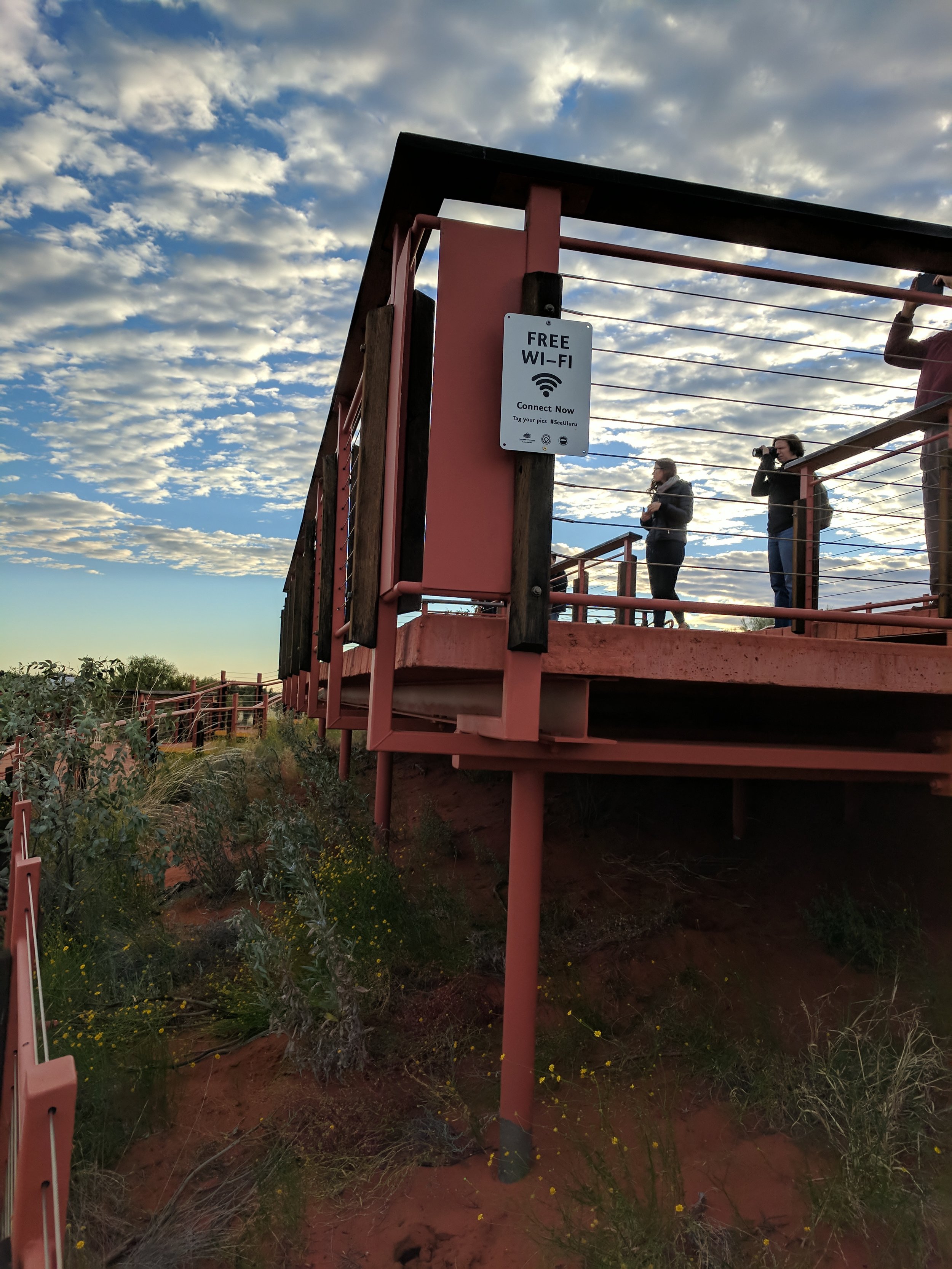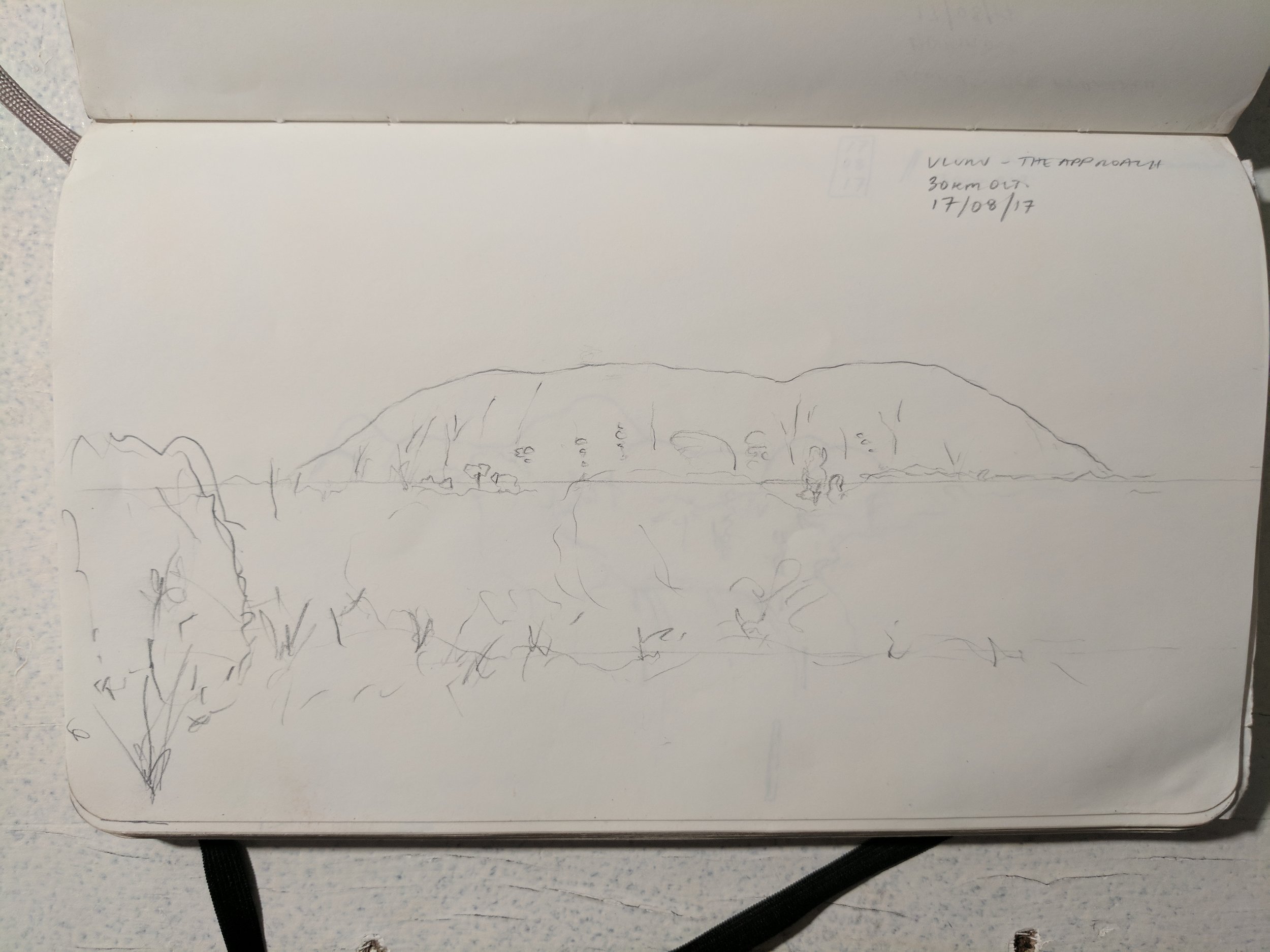






















CLICK ON THE IMAGE to read more…
Well shit, the arbiter of the whole Grand Section, the heart of the nation, the spiritual center, the symbol of Aus-bloody-straya! This epic place is inhabited mostly in the “township” of Yulara (Ayers Rock Resort), a 1983 purpose built town by Cox Architects as a comfortable base for viewing Uluru (Ayers Rock) and Kata Tjuta (The Olga’s). Uluru’s massive scale, isolation and abruptness does make this place truly powerful. Light changes on the faces of the rock constantly, revealing hidden cracks, colours and forms by the minute. Quietly sitting to the east of Uluru lies Mutitjulu the aboriginal community. The local Anangu mob 'own' the rock but have leased it back to the park for 99 years. When this lease is up who knows what will happen. Tjukurpa (Spiritual Law) continues to determine responsibilities and relationship to country.
Proposing alternate visions of the future, what would Uluru look like in the year 2084?
Read more by CLICKING ON THE IMAGE

Visions of Uluru and Yulara in 2084 - the year the 99 year lease on the national park ends.
• Traditional Owners = Anangu People (Yankunytjatjara, Pitjantjatjara and Luritja)
• Semi arid zone/Great Sandy Desert bioregion
• Mean annual temps; H-30.1 L-14.1
• Annual rainfall; 285mm
• Population 300 (Mutijulu), 400k/year (Yulara visitors), 1200 (staff)
• Elevation 863m (top of Uluru, Height is 348m)
• Uluru is made of Arkose sandstone that erupted from the Alice Springs orogeny about 400 million years ago tilting a section of the old sea bed 90 degrees
• At Yulara over 65 tours and experiences are on offer by the hotels and tour companies
• The communities of Uluru utilise 17 bores
• By Commonwealth imposition, Yulara is under a 99 yr lease from Anangu as a national park. 67 years remain and Big ideas are in mind

Yulara manager Peter White was kind enough to get us entry to the art installation “Field of Lights”. A massive light installation with views of Uluru mirroring the night sky.

Daily we would ride from Mutijulu (the aboriginal community to the east of Uluru) to Yulara. This 30km trip either way would book end our days. Not a bad commute at all.

“The rock did not disappoint me, far from it. All the tourists in the world could not destroy it, it was too immense, too forceful, too ancient to be corruptible” Robyn Davidson, Tracks

This is from the architect’s website
“Ayers Rock Resort (nee Yulara) was developed as a cohesive township and resort to prevent degradation of the desert environment around Australia’s iconic Uluru (Ayers Rock) by haphazard tourism development. The site for the township was selected some distance away from Uluru, in a valley masking views from the rock by sand dunes.
The plan follows the serpentine shape of the valley. At each end are hotel resorts, linked by a pedestrian spine with town and visitor facilities, shops and housing distributed on either side. The architecture is mostly derived from the need for the township to be environmentally self-sufficient, much of the roofscape being covered by solar collectors. Outdoor spaces are protected by a system of hyperbolic fabric structures which also extend over some roofs to provide a cooling layer.
In the larger resort, the public spaces are canopied by dual fabric membranes for climate control, this system allowing changing daylight to permeate the interior. Water is drawn from artesian bores as well as from run-off roofs. Colours are derived from the surrounding desert which, surprisingly to many visitors to Uluru, are extraordinarily vibrant, particularly in the wet season. Carparking is restricted to hidden areas on the township perimeter, beyond which is a ranger’s residence, further housing, police and service stations, and a sewage treatment plant.
Ayers Rock Resort is often cited as the archetypical contemporary Australian township, and it is the culmination of much of the practice’s earlier small scale projects seeking to define an unmistakable Australian architectural typology.”
The resort has expanded since this first proposal going beyond the refuge of the dunes to capatalise on the views of Uluru. Yulara sees the equivalent of the population of Canberra coming through it’s doors every year.

Talking to the maintenance blokes who worked in the ranger station these posts have a lot of thinking behind them. The steel posts are used for longevity although have to be painted with a sealant in the ground to stop electrolysis from speeding up erosion.

This purpose built viewing platform keeps tourists from trampling the fragile dunes, provides various viewing points and free wifi so you can share online.

We were staying with one of Owen’s school friends who’s incredible hospitality allowed us to stay in “ranger-ville”, an extension of Mutijulu, we even had light! Thanks Tegan!

Yulara is completely privately owned so there was no public space we could hold an exhibition. We opted for a guerrilla post card drop with the custom cards we made about the future of Yulara/Uluru. Top row in the middle.

We were always on the lookout for water. It could be windmills, tanks or bores, rationing water is not as much fun as it sounds.

Built as “culturally appropriate” housing for the local aboriginal mob these hexagonal dwellings included half outdoor space, a large internal open plan and a mezzanine. The “culturally appropriate” argument is an interesting one but perhaps functioning houses is more of a priority.

This was our daily veg. We used zucchini and carrot because it lasted without a fridge. Although the outside looks a bit manky it stays perfect inside (unless it’s day 8 without a shop, that gets a bit gross).

Bobbie pointing out where we are on our flag that was a map of our trip. This came in useful for visibility on roads and to facilitate conversations. Amazingly, the flag lasted until we had our final talk in Perth, we were riding to the venue and a strong gust blew it off her flag pole and into the Swan river, never to be seen again. I guess that’s a wrap.